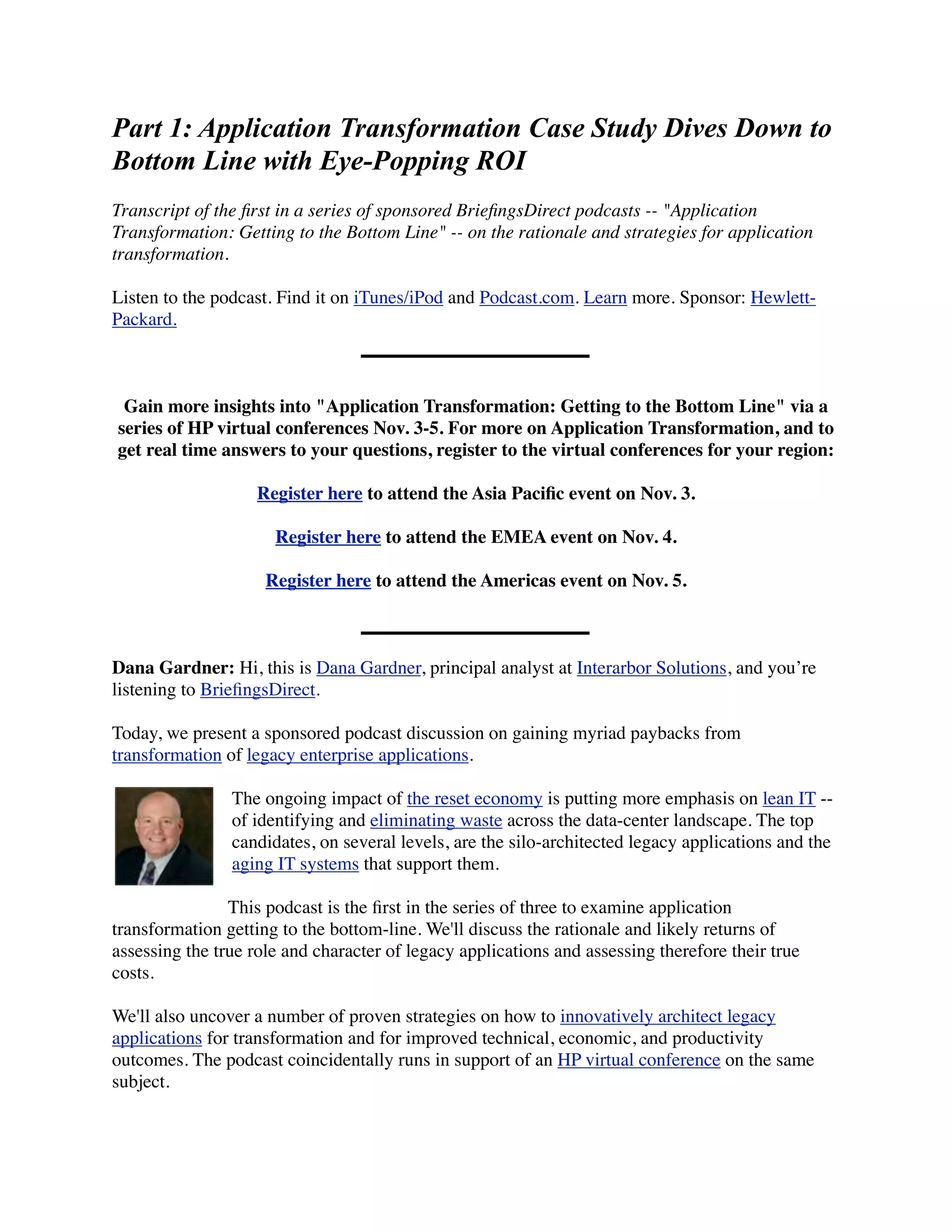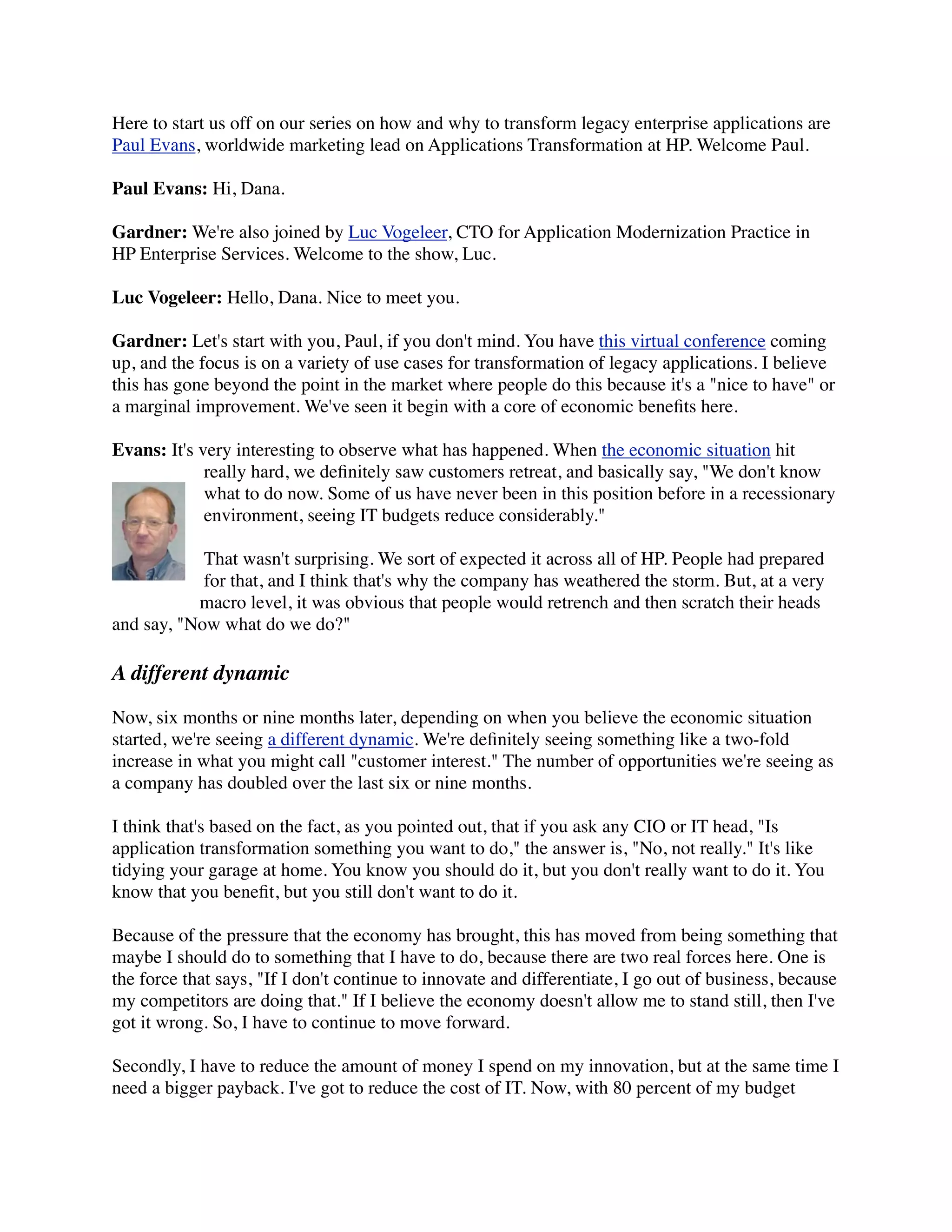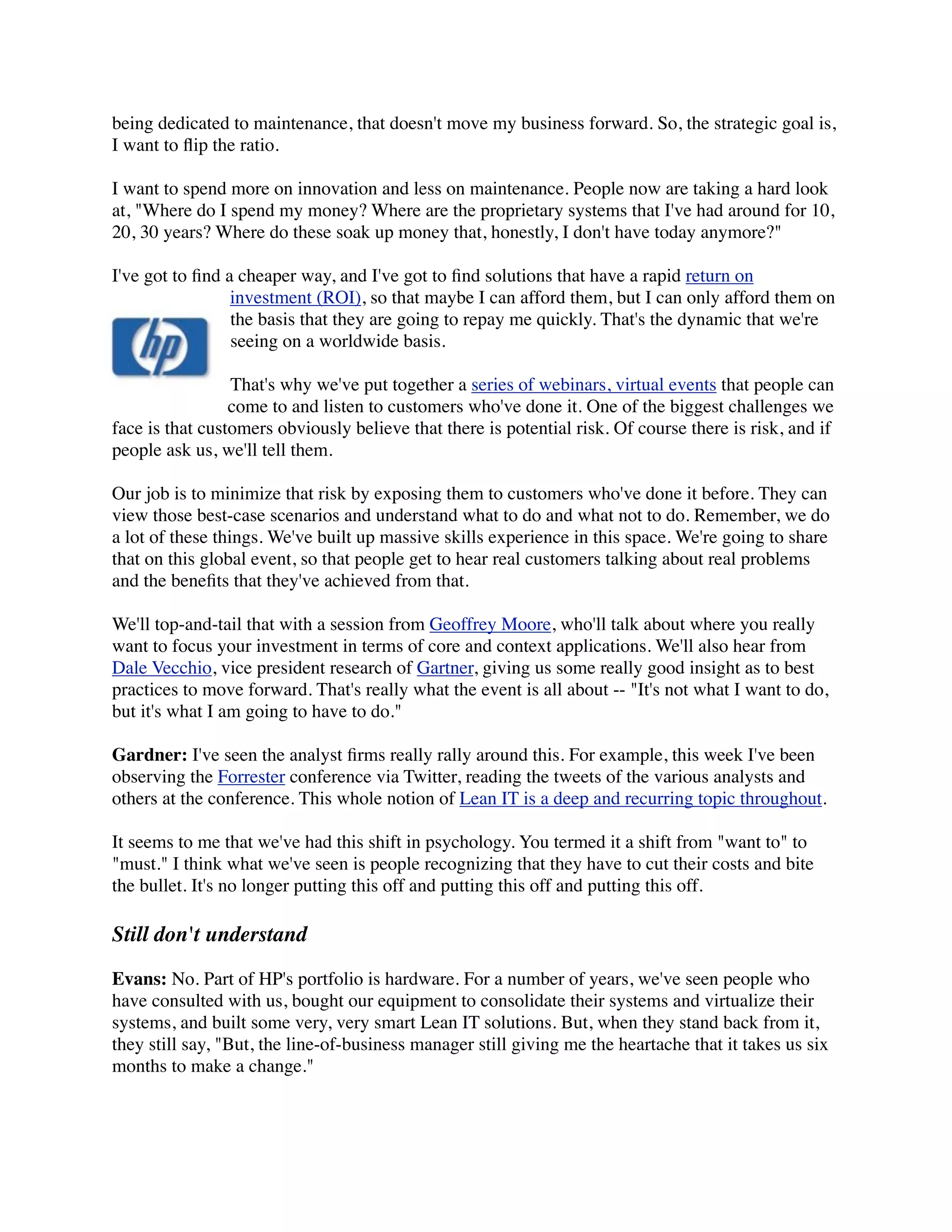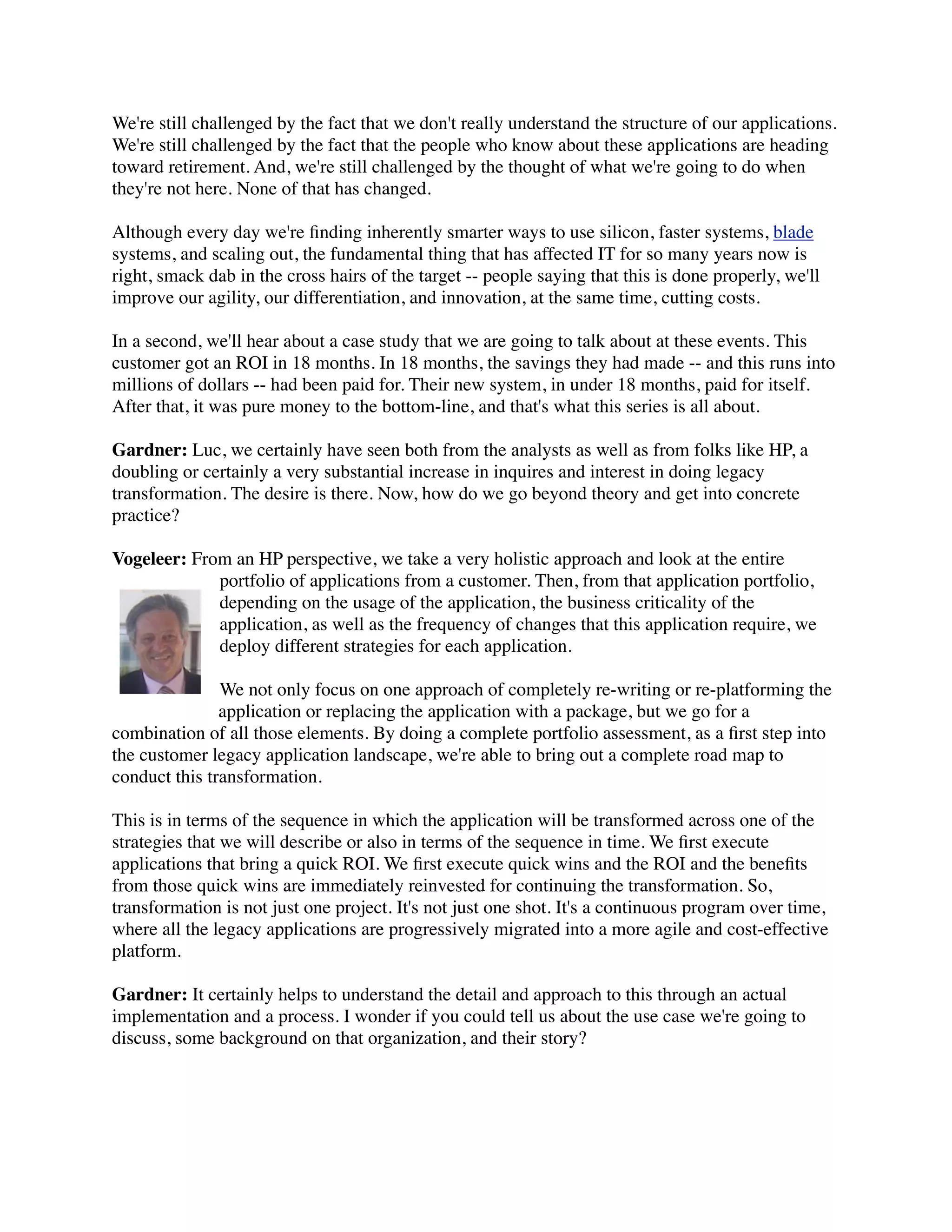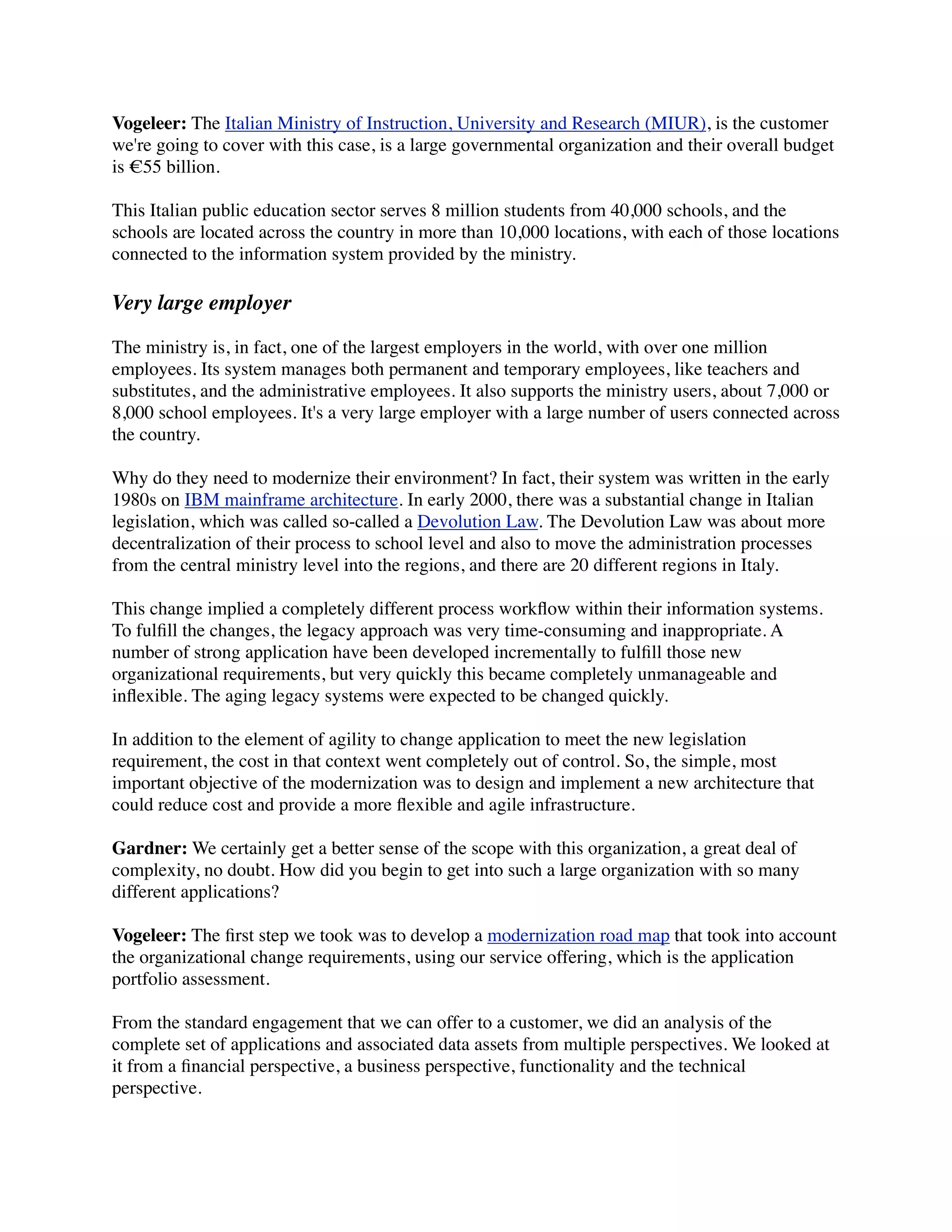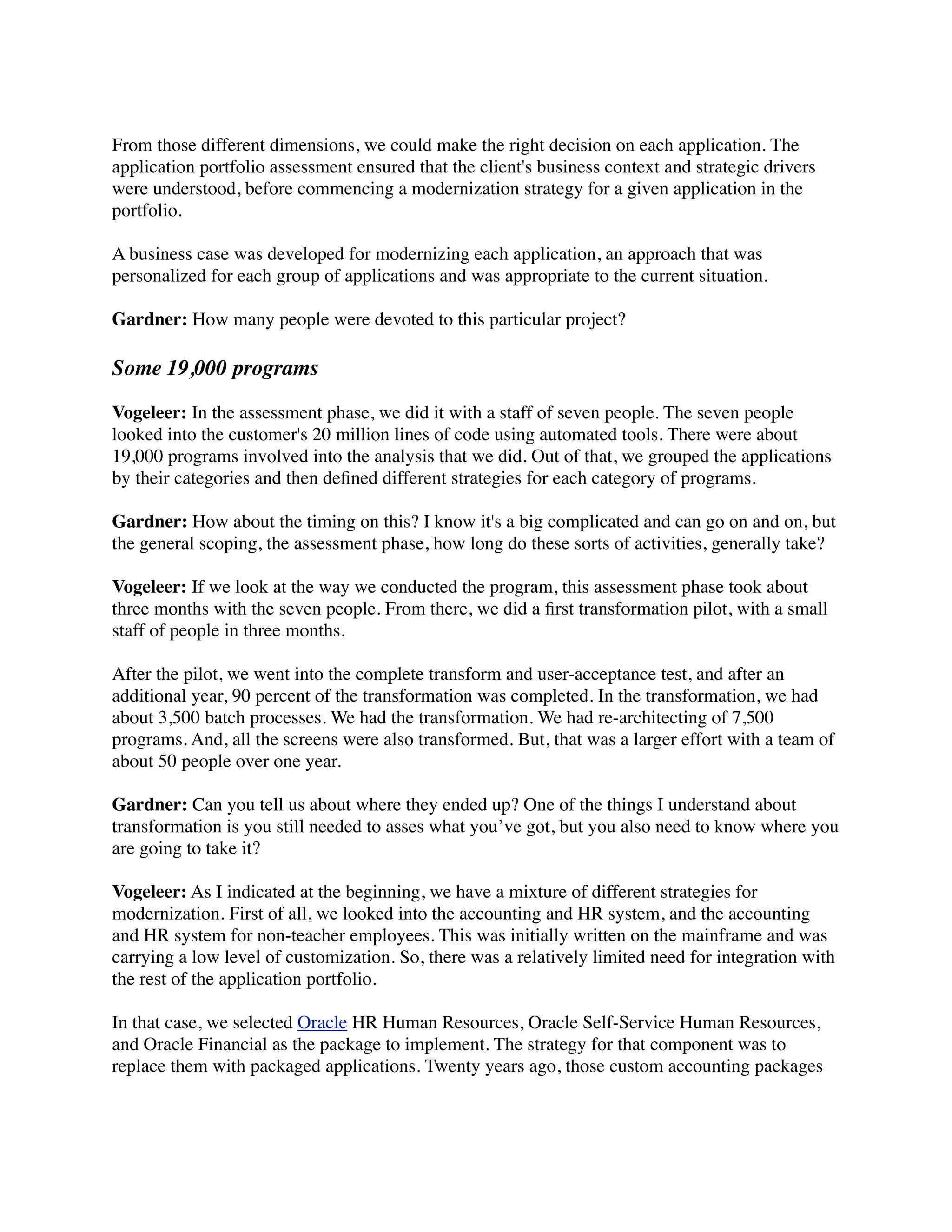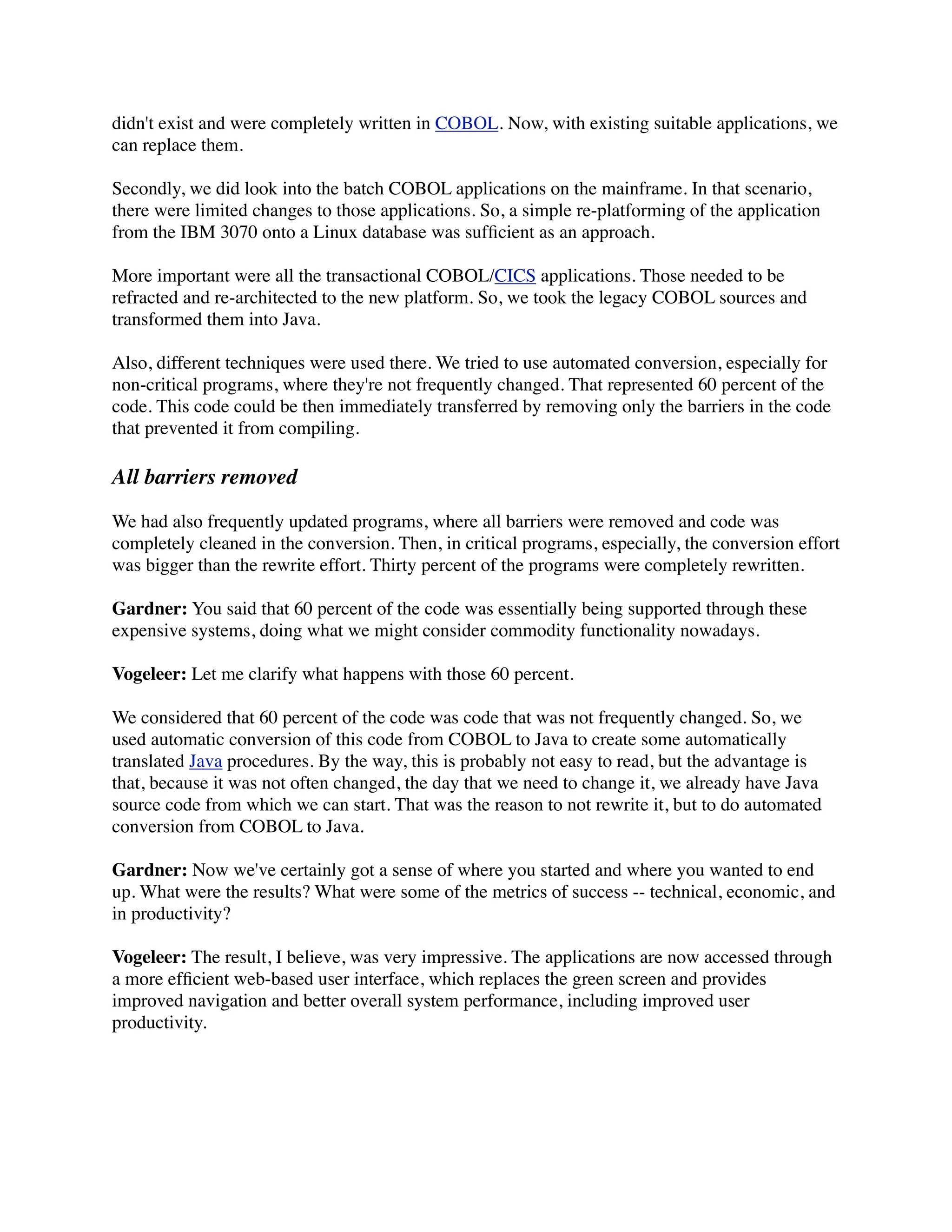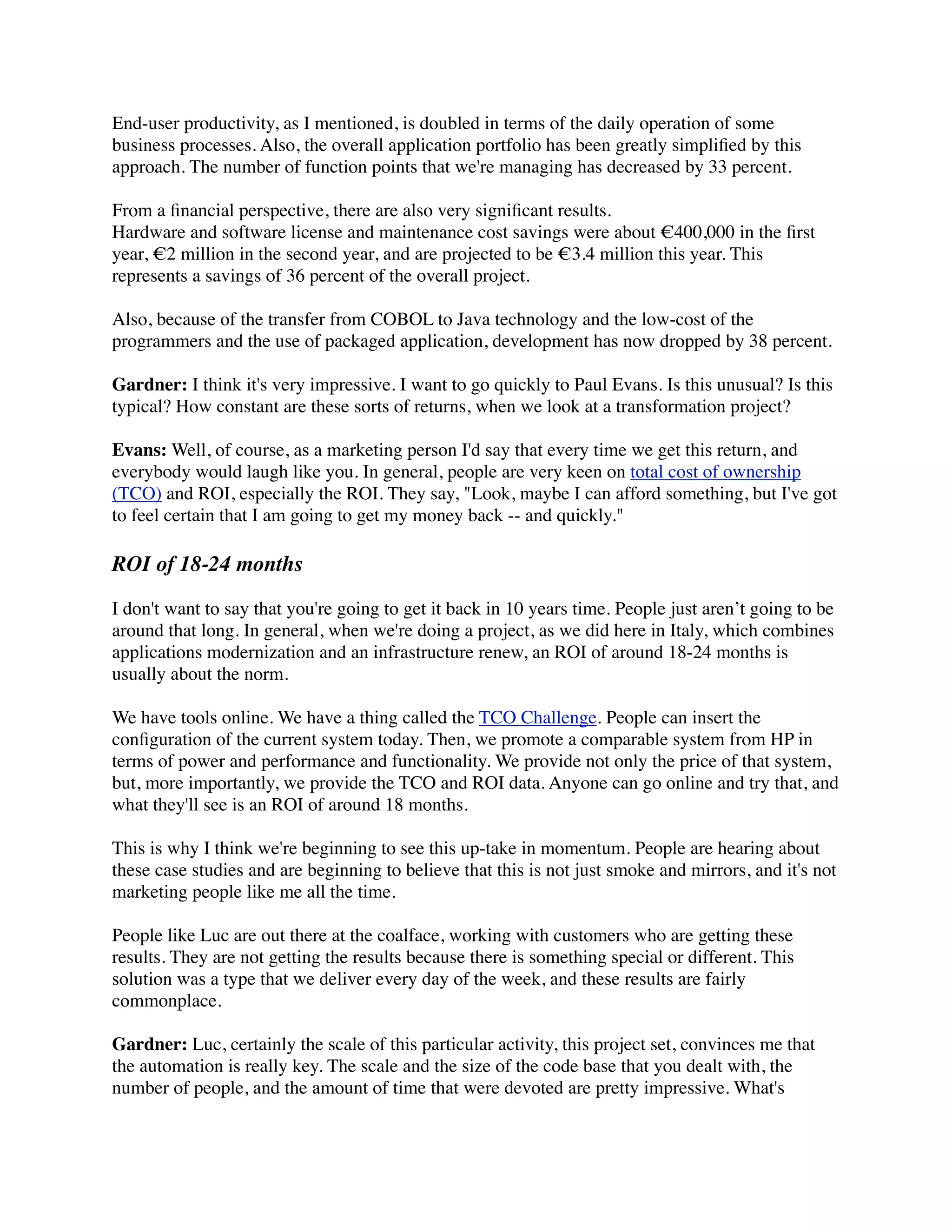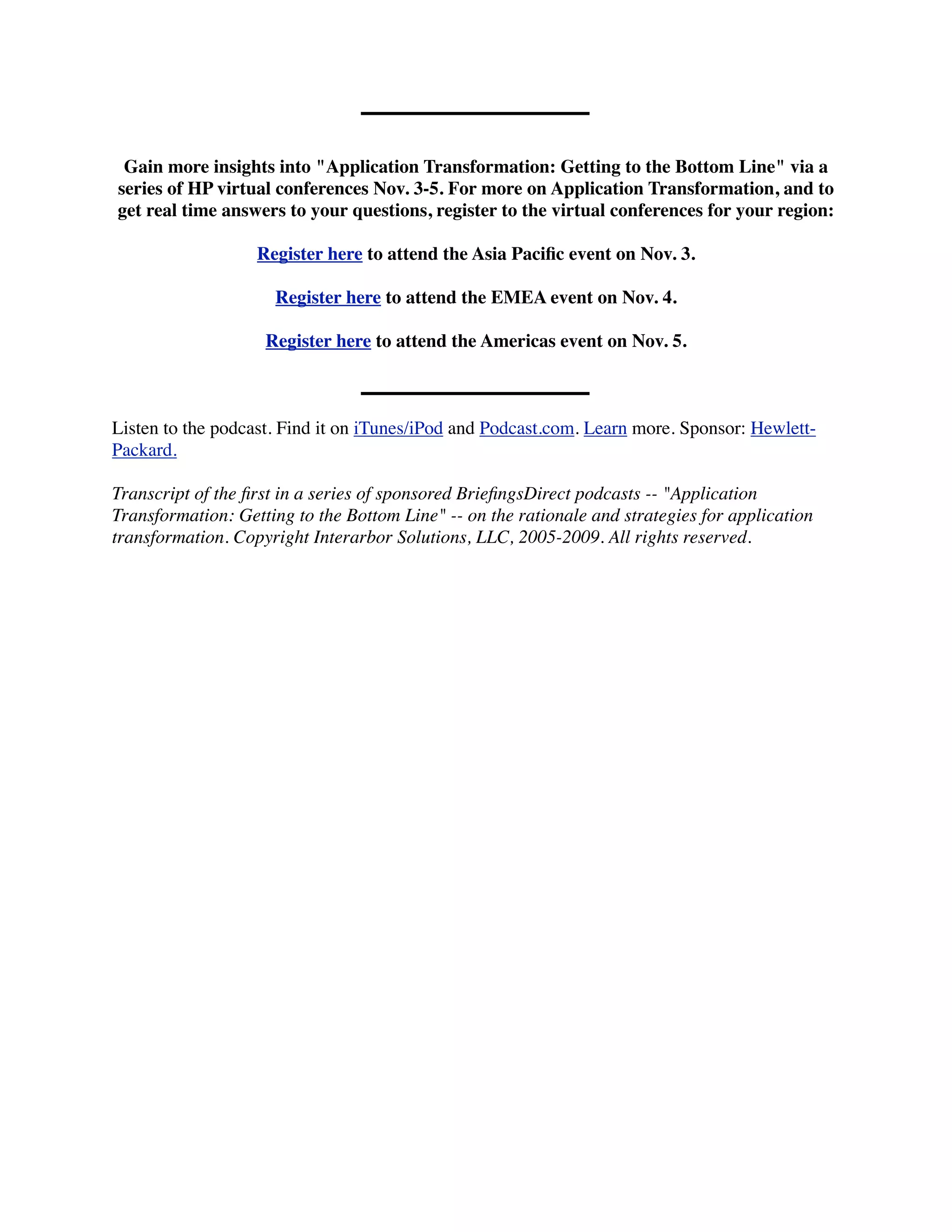The document provides insights from a podcast discussing application transformation, emphasizing its necessity for businesses to innovate and reduce costs amidst economic pressures. It highlights a case study involving the Italian Ministry of Education, detailing their modernization efforts of legacy systems to improve agility and reduce expenditures. The discussion underscores the need for strategic planning and a holistic approach to transforming legacy applications, ultimately leading to significant ROI and enhanced operational efficiency.
